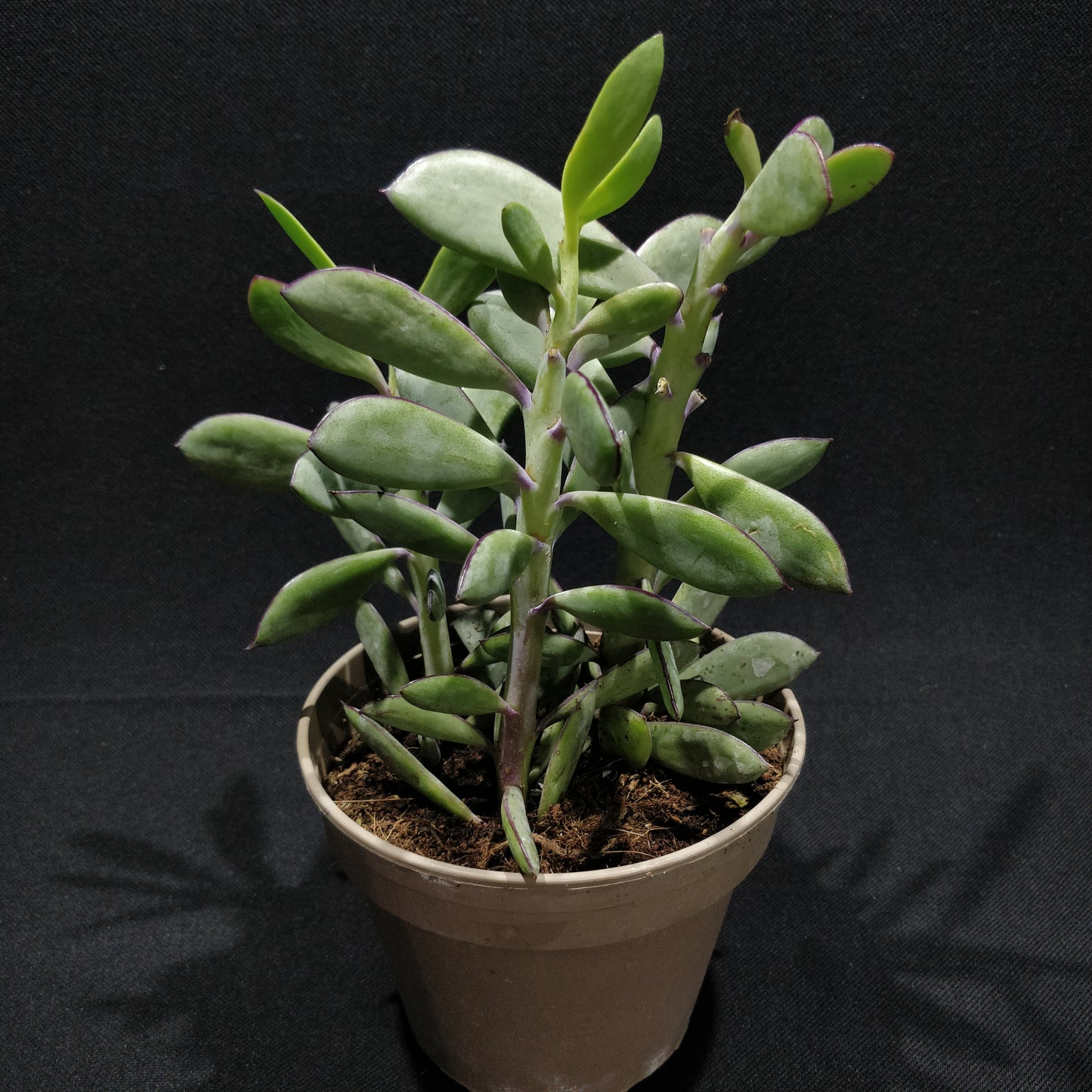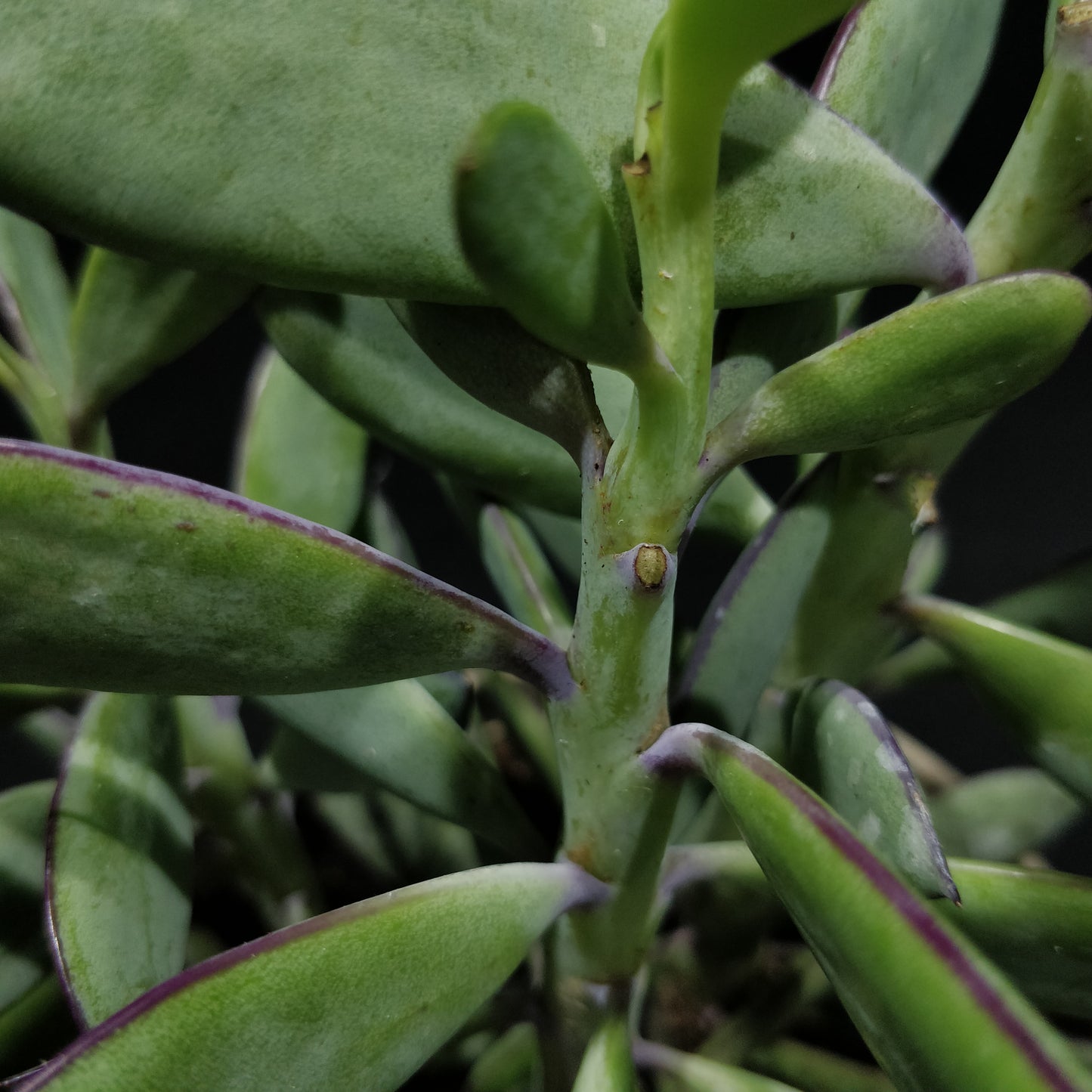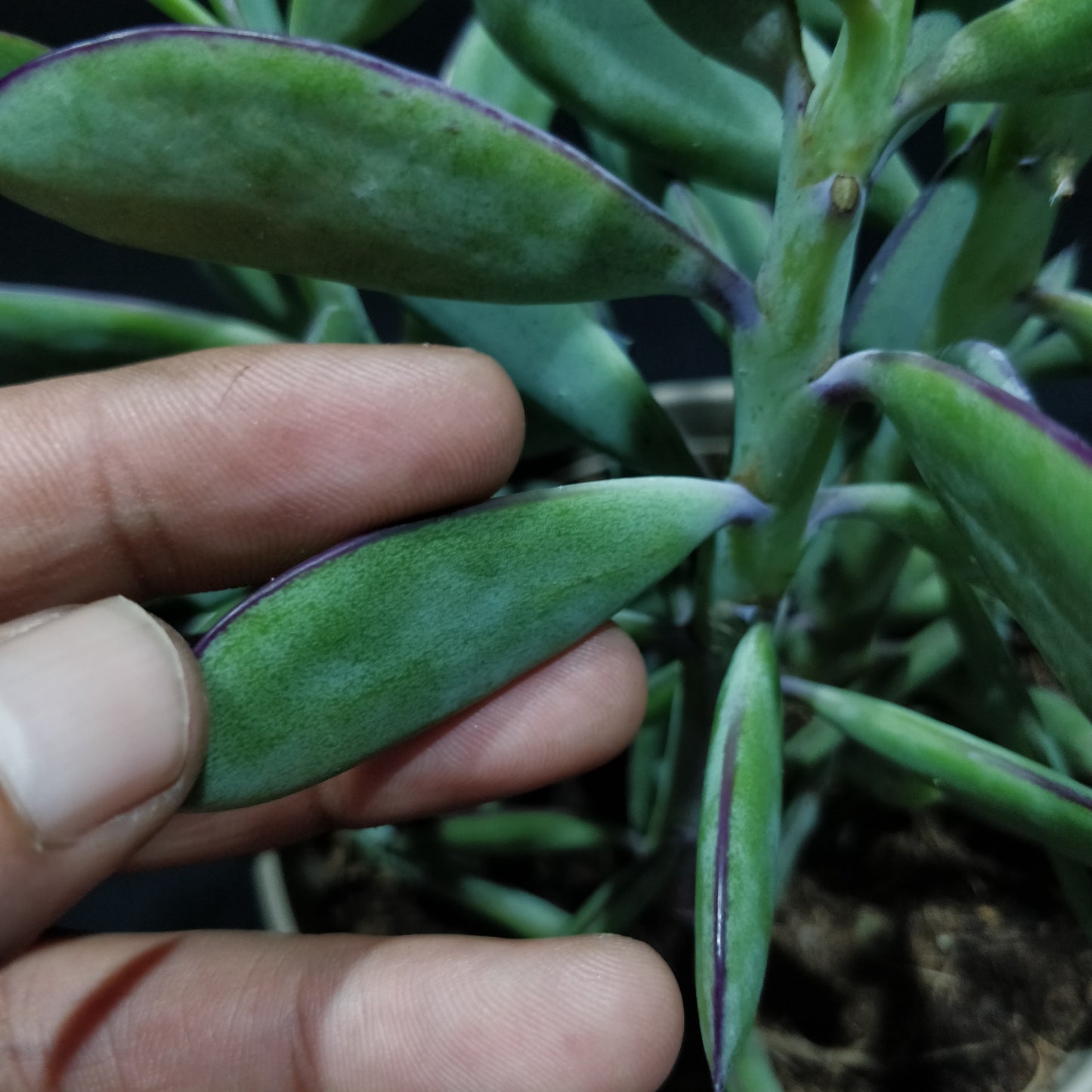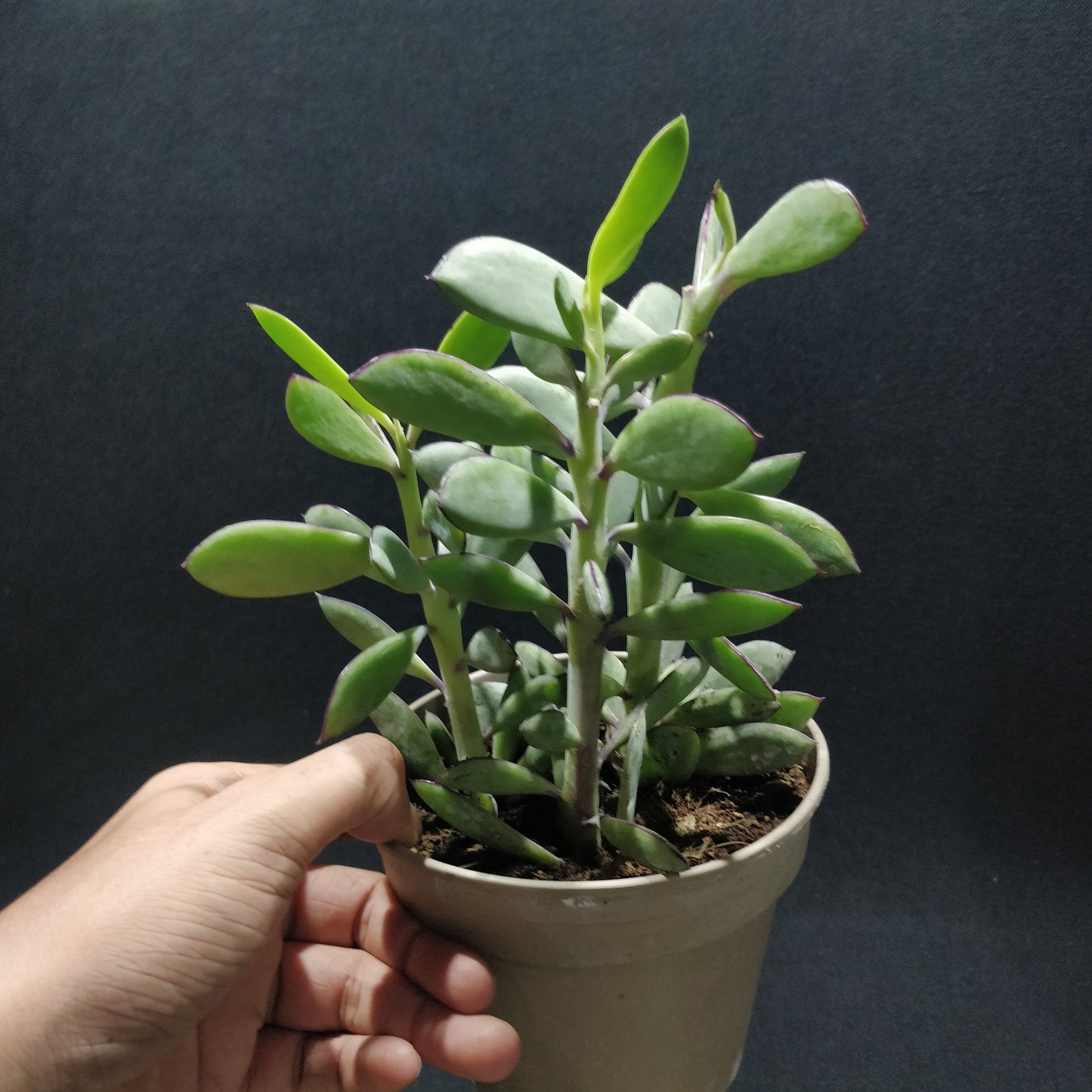Senecio Crassissimus
Senecio Crassissimus
Out of stock
Couldn't load pickup availability
Senecio crassissimus is a small succulent shrub with erect, fleshy, greyish-green to purple stems that hold glaucous leaves with purple margins facing outwards. It grows up to 24 inches (60 cm) tall and 18 inches (45 cm) wide. Leaves are flattened, obovate, up to 4 inches (10 cm) long, up to 1.2 inches (3 cm) wide, and up to 0.2 inches (0.5 cm) thick.
The flowers are yellow and appear in a loose cluster on branched, up to 2 feet (60 cm) tall stalk that rises from the stem tips from mid-summer to winter.
Here are some necessary care instructions for Senecio Crassissimus:
- Lighting: prefers bright indirect sunlight but can also thrive in partial shade. It is best to keep it away from direct sunlight, which can scorch its delicate leaves.
- Watering: Water the plant thoroughly and let the soil dry out between watering. Overwatering can lead to root rot, so it's important to ensure that the soil is not waterlogged.
- Humidity: They likes moderate humidity, but it can tolerate lower humidity levels as well. You can increase humidity by placing a tray of water near the plant or misting it regularly.
- Temperature: This succulent plant prefers warm temperatures between 18° Cto 32°C. It can tolerate slightly lower temperatures, but it's best to avoid exposing it to cold drafts.
- Soil: Use a well-draining potting mix that contains a good amount of perlite or sand. String of Bananas does not like to sit in water, so it's important to ensure proper drainage.
- Fertilizer: Feed the plant with a balanced fertilizer every two to four weeks during the growing season (spring and summer). Avoid fertilizing during the dormant period (fall and winter).
- Propagation: You can propagate them through stem cuttings. Simply cut a section of the vine and plant it in moist soil or water until roots develop.
- Pests and Diseases: They is relatively pest and disease-resistant, but it can attract mealybugs and spider mites. Regularly inspect the plant and treat any infestations promptly.
Scientific Classification
Scientific Classification
Order: Asterales
Family: Asteraceae
Genus: Curio











